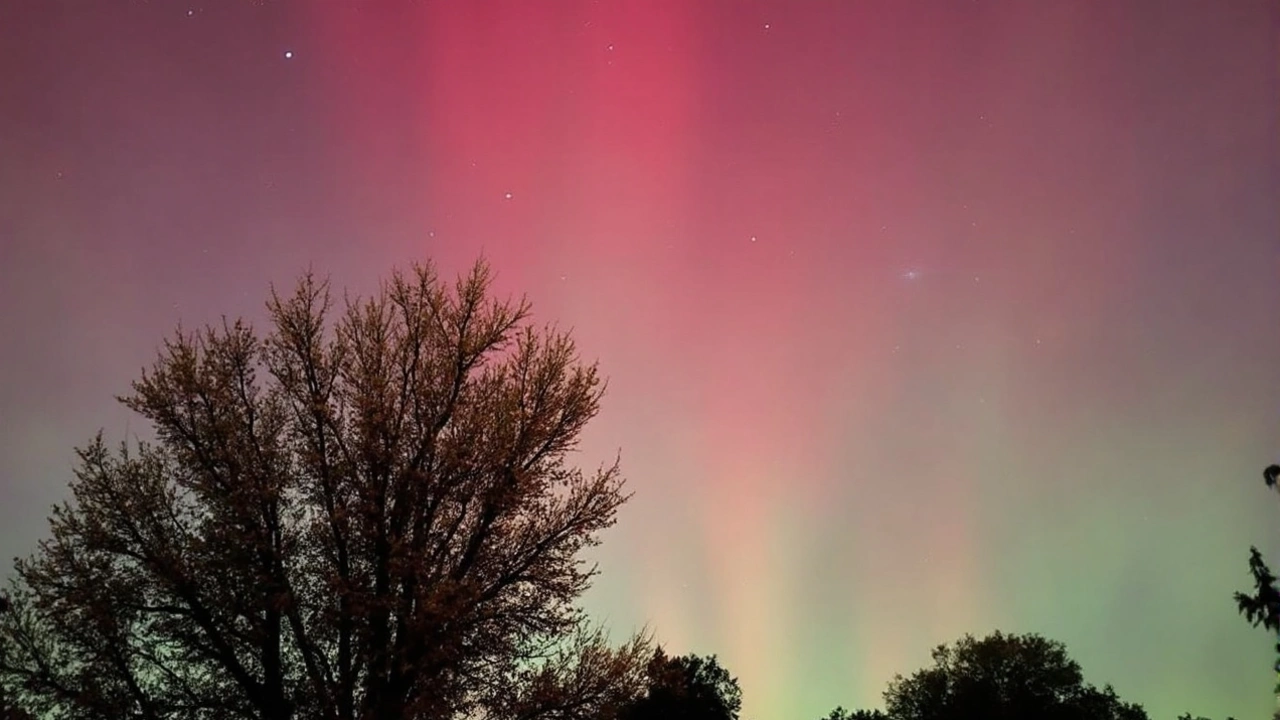Rare Aurora Borealis Graces the Midwest Tonight
If you live in Illinois, Wisconsin, or Michigan, you might be in for a treat tonight: the northern lights are making a rare stopover. Thanks to an unusually strong geomagnetic storm, people far from the Arctic Circle have a chance to see the famous green and purple glow of the aurora borealis right in their own backyard. Normally, this phenomenon sticks to places much further north, but tonight brings the spectacle much closer to home.
The reason for all this excitement? A blast of charged particles from the sun—what the experts call a solar wind disturbance—has been smashing into Earth's magnetic field with impressive force. The event has been pegged as a G3 or possibly even higher, which is strong enough to extend aurora visibility much further south than usual. That means cities like Chicago, Milwaukee, Madison, and Detroit could witness this spectacular show, weather permitting.
But don’t just look out your window and expect fireworks—conditions have to be almost perfect. You’ll want to aim for the sweet spot between 10 PM and 2 AM, and you’ll need a clear sky. Cloudy weather is a dealbreaker, and so are those bright city lights that drown out the faint glow. Experts are urging would-be skywatchers to get as far away from urban glow as possible. Parks, remote fields, and lakeshores become the best seats in the house.

How to Watch (and Capture) the Light Show
Don’t get your hopes up for neon streaks like you see in those epic photos online. To the naked eye, the aurora might look like soft, greenish wisps or maybe a pale shimmer on the northern horizon. But here’s a tip: pull out your smartphone. Even a regular phone camera can pick up the colors your eyes might miss. So if you’re standing in a dark field and think you’re seeing a faint haze, try snapping a long-exposure photo—you might just catch purple, green, or even red.
No fancy equipment needed. Just turn off your flash, hold the phone steady, and keep snapping. If you have a tripod, use it. If you don't, prop your phone against a rock or your car roof to reduce blur. Patience pays off. Sometimes the show ramps up suddenly, so stick around if you can.
Why does this even happen? Electrically charged solar particles, hurled out during sunspot eruptions, hurtle through space and hit Earth’s magnetic bubble. That’s what gets things glowing. The energized gases high in the atmosphere light up, giving us one of nature’s best performances.
While the scene unfolding above is breathtaking, the same storm shaking things up in the sky can also ruffle a few feathers down below. The scientists at NOAA warn that a geomagnetic storm of this level might cause glitches in GPS devices and some satellite communications. Don’t panic—you probably won’t lose access to your ride-hailing app or the morning traffic report. For most people, any disruptions will be too minor to notice. Pilots, mariners, and folks who rely on highly precise navigation might see short-lived hiccups, but nothing major is expected.
Midwesterners don’t get many chances to watch the northern lights from their own backyards. So, if the sky’s clear and you can sneak away from the bright lights, look north and be patient. With some luck, tonight's sky might deliver a memory you’ll want to brag about tomorrow.
